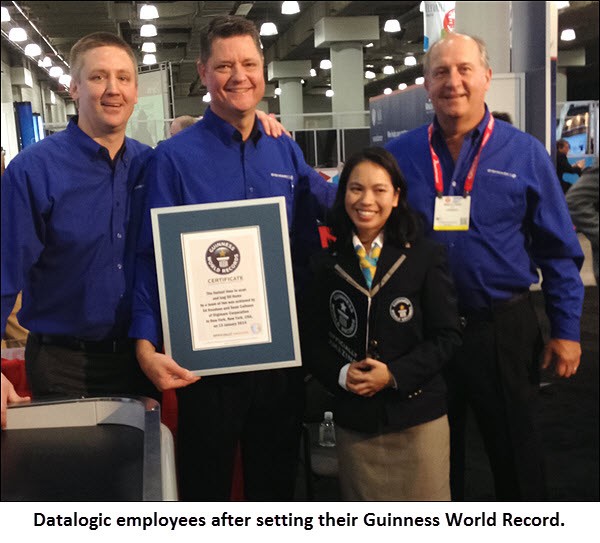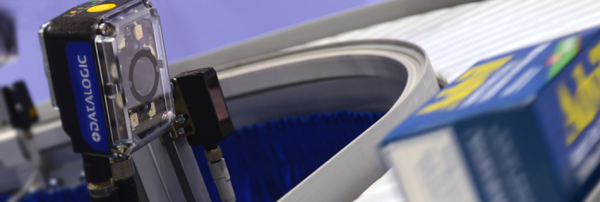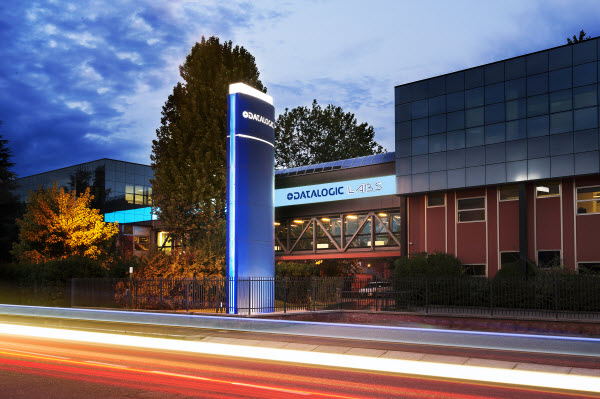How fast can you scan and bag dozens of items at the grocery store? Have you ever accomplished this in less than a minute? Well, as of 2014, Datalogic has held the Guinness World Record (the universally recognized authority for record-breaking achievement) for the fastest time to scan and bag 50 items with a time of 48.15 seconds. If only every checkout was this fast and efficient!
 Such record-breaking innovation has always been a part of Datalogic. The company likes to say “Innovation is in our DNA” and with more than 1,000 patents to its credit, Datalogic is proving that true every day.
Such record-breaking innovation has always been a part of Datalogic. The company likes to say “Innovation is in our DNA” and with more than 1,000 patents to its credit, Datalogic is proving that true every day.
Founded in 1972 by Dr. Romano Volta, Datalogic’s roots began just outside the city of Bologna, Italy in the rectory of the Parish in Quarto Inferior. In its infancy, Datalogic produced electronic devices, and then sensors for machine automation in the textile, ceramic, and packaging industries. With the emergence of supermarkets in Europe, Dr. Volta realized the need for bar code reading technology. By combining optics, electronics, and mechanics, Datalogic introduced some of the world’s first bar code reading devices.
That same entrepreneurial, forward-thinking spirit remains ingrained in the company’s culture. Datalogic constantly looks at the current demands of the manufacturing industry and develops new technology to meet and exceed those demands. Datalogic holds a growing portfolio of more than 1,150 patents and patent applications with approximately 300 pending approval. The company has a dedicated research division, DL Labs, with 12 research centers worldwide and 400 R&D engineers. In just one year (2014), Datalogic launched 25 new products accounting for 21% of the company’s total sales in that period of time.
Keeping Up With the Record-Breaking Pace of Business
As a leader in producing products for the automatic data capture industry, Datalogic must continue to keep up with emerging trends — and that change has been rapid. Jonathan Stiles, Marketing Director for Datalogic Industrial Automation North America, explains: “On the industrial automation side, there has been significant change over the past decade due to new technology, new industry standards, and new government regulations. Initially, bar code reading technology was laser based. That technology has evolved to now include imaging, which decodes data by taking a picture of 1D or 2D symbologies. With advancements in technology and the availability of more cost-effective products, imaging technology is becoming the more predominant solution in the market.”
Also, two new technologies have emerged – machine vision and laser marking. Machine vision primarily uses “smart cameras” for the inspection of products and components in applications where there is no bar code present such as looking for product defects or verifying the presence of a serial number. Laser marking is a more permanent solution for marking bar codes, serial numbers, expiration dates, etc. on products. Along with these new technologies, Datalogic is also developing new ways that the technology is applied. “With increased pressure from consumers and government to track products and components throughout the manufacturing process, we now see all of this technology used in more industries – from pharmaceutical and healthcare to food & beverage to automotive manufacturing,” said Stiles. “There is also more of a safety concern and with that comes an increased use of safety light curtains and smart sensors that communicate directly back to the machine about status and operation.”

On the automatic data capture and point-of-sale side, bar codes and their associated technology have significantly evolved. Instead of laser, imaging and vision systems are used. These cameras capture more information faster. Datalogic was the first manufacturer to provide 100% digital imaging scanners for retailers with their Magellan 9800i product. Another new product, the JadeX7, is an automated scanning portal that automatically reads grocery items as they move on a belt with no human intervention.
There are also uses for this new technology beyond groceries and inventory with implementations in healthcare and other industries. Stiles said: “The power to store information is constantly evolving. The bar code itself is now becoming part of the package graphic through the use of digital watermark technology. Digital codes are hidden to the human eye in packaging graphics but they store an increasing amount of data and eliminate the need to search for a bar code. Datalogic is a pioneer in this area of digital watermark detection.”
Innovative Research as a Vital Strategy to Achieve Success in the Future
Even with the almost constant change in technology, Datalogic plans for the future by monitoring the ongoing product needs in the industry. Today, the company is the only manufacturer in the market that offers integrated solutions for process automation – from manufacturing to distribution to point of sale. In addition, Datalogic manufacturers the broadest portfolio of technology-agnostic products and solutions in the world, including laser and image-based handheld and fixed-mount bar code reading technology, mobile computers, laser marking, machine vision, sensors and safety solutions.

“Over the next 5 – 10 years, we will focus on what we call the strategic paradigm,” said Stiles. “This is comprised of customer focus, engagement in people, and market expansion. Datalogic will continue to invest in technology and develop innovative products that meet the current and future needs of our customers. In particular, we will focus on developing vision and imaging technology and will increase R&D investments from 7% to 8%. We believe that continuing our focus on research and development will keep us ahead of the competition and ensure we’re delivering the products our customers need now and in the future.”
A part of Datalogic’s innovation strategy has been to identify and acquire companies that can provide new technology to the company’s product offerings. This growth through acquisition plan is fairly common throughout the industry, however, Datalogic remains highly selective in choosing its new partners. Stiles explains: “While many of our competitors have acquired similar technology, Datalogic carefully researches and selects every potential acquisition before adding it to our portfolio. We want to either supplement innovation from our own R&D through acquisition of a new company or expand our reach into a new market. For example, we recently acquired PPT Vision to broaden our product range of machine vision products. And, through our acquisition of Accu-Sort, we were able to quickly expand our reach in the North American market.”

This strategy has paid off for Datalogic in terms of growth and success. It has also helped the company achieve recognition in its own home country. Datalogic’s founder Dr. Romano Volta received the prestigious “Premio Imprese per l’Innovazione” (Business Prize for Innovation) from the President of Italy, Giorgio Napolitano. This award recognizes that the company has grown both in Italy and in the world by investing in innovation.
As Datalogic approaches nearly 45 years in operation, the company continues to look for ways to deliver “record-breaking” innovation to its existing and potential customers through its research and acquisition efforts. After all, with “Innovation in its DNA,” Datalogic is sure to continue to achieve success by breaking boundaries in technology not only at the grocery store but in many applications used by companies and people around the world.


